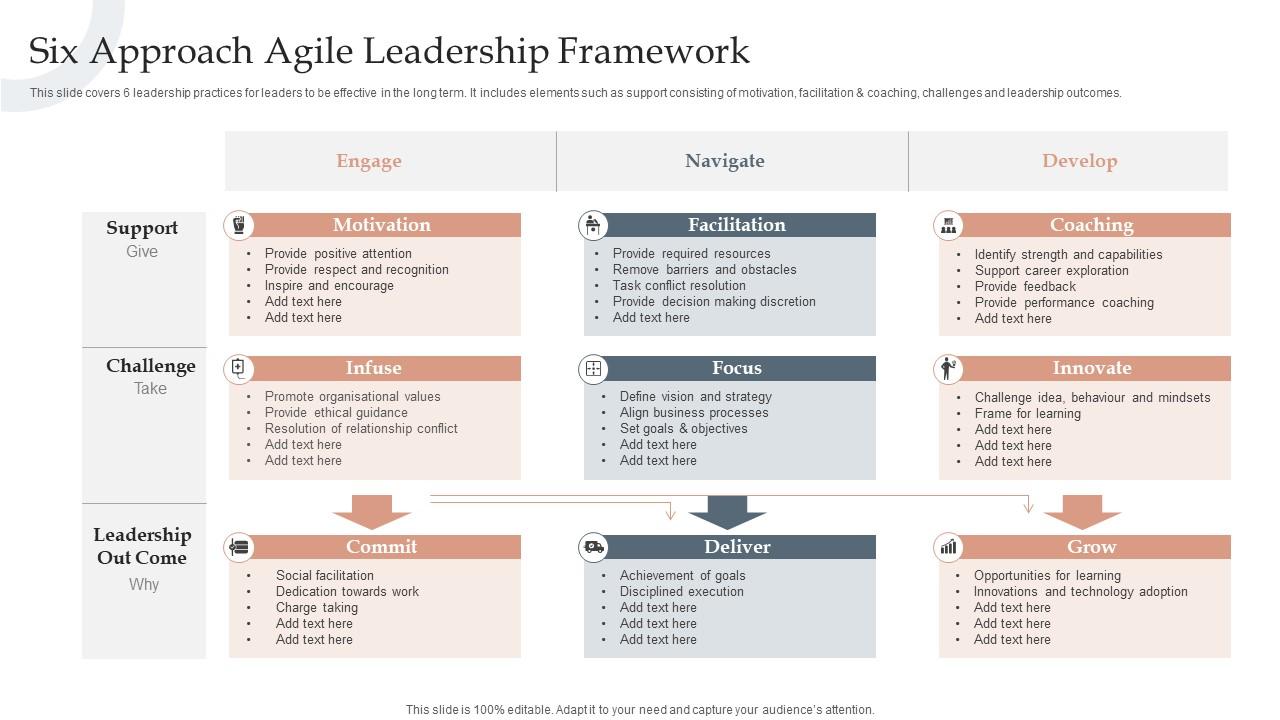
Dynamic Leadership in Action: Navigating Change with Agile Approaches
In the fast-paced and ever-changing landscape of today’s business world, leadership must evolve to meet the challenges of constant change. Agile leadership approaches have emerged as a powerful framework for leaders navigating uncertainty, fostering innovation, and driving success. Let’s delve into the key aspects of agile leadership and how it enables leaders to navigate change with vision.
Understanding Agile Leadership: A Paradigm Shift in Leadership Style
Agile leadership represents a paradigm shift from traditional, hierarchical leadership models. It is characterized by adaptability, collaboration, and a focus on empowering teams. In contrast to top-down decision-making, agile leaders value input from all levels of the organization, fostering a collaborative and inclusive environment. This approach enables leaders to leverage the collective intelligence of their teams to address complex challenges.
Embracing Change as an Opportunity: A Core Tenet of Agile Leadership
One of the fundamental tenets of agile leadership is viewing change not as a threat but as an opportunity for growth and improvement. Agile leaders understand that change is constant and inherent in the business environment. Instead of resisting change, they embrace it, guiding their teams through transitions with a positive and forward-thinking mindset. This adaptability is key to thriving in today’s dynamic markets.
Agile Leadership Approaches and Team Empowerment: Fostering Ownership
Agile leaders prioritize team empowerment, fostering a culture where team members feel a sense of ownership and responsibility for their work. By decentralizing decision-making and encouraging autonomy, leaders empower teams to take ownership of projects, make informed decisions, and innovate. This approach not only enhances team morale but also unleashes the full creative potential within the organization.
Iterative Planning and Flexibility: Adapting to Changing Realities
Agile leadership emphasizes iterative planning and flexibility in response to changing realities. Instead of rigid long-term plans, agile leaders embrace iterative cycles that allow for regular reassessment and adjustment. This flexibility enables leaders to respond swiftly to market shifts, customer feedback, and emerging opportunities, ensuring that strategies remain relevant and effective.
Open Communication Channels: Facilitating Collaboration and Feedback
Communication is at the heart of agile leadership. Leaders actively foster open communication channels, creating an environment where ideas, feedback, and concerns can be freely shared. This transparent communication facilitates collaboration within teams and ensures that leaders are informed about the challenges and insights emerging at various levels of the organization. Open lines of communication contribute to a culture of trust and innovation.
Continuous Learning and Adaptation: Staying Ahead in Knowledge
Agile leaders prioritize continuous learning and adaptation. In a rapidly changing business landscape, staying ahead in knowledge is crucial. Agile leadership involves personal and organizational commitment to ongoing development, embracing new skills, and adapting strategies based on evolving market trends. This commitment to learning ensures that leaders remain agile and well-equipped to navigate uncertainties.
Balancing Structure and Flexibility: The Agile Leadership Dilemma
Agile leadership strikes a delicate balance between providing structure and allowing flexibility. While agile leaders value adaptability, they also recognize the importance of setting clear goals and creating a framework for success. This balance ensures that teams have the guidance they need while maintaining the flexibility to respond to unexpected challenges or opportunities.
Agile Leadership Approaches in Crisis Management: A Resilient Response
Agile leadership shines in crisis management scenarios. The ability to pivot quickly, make informed decisions, and maintain a calm and focused demeanor during crises is a hallmark of agile leaders. By fostering a resilient mindset within the organization, agile leaders guide their teams through challenging times with confidence, adaptability, and a commitment to collective success.
Visit Agile Leadership Approaches for In-Depth Insights
For a deeper exploration of agile leadership approaches and practical insights for implementing them, visit Agile Leadership Approaches. This resource provides a comprehensive guide for leaders looking to cultivate agility, embrace change, and lead with vision in today’s dynamic business environment.
Conclusion: Leading with Vision in an Agile World
In conclusion, agile leadership approaches are transformative in today’s rapidly changing business landscape. Leaders who embrace agility, empower their teams, and view change as an opportunity position themselves for success. By fostering a culture of continuous learning, open communication, and adaptability, agile leaders navigate uncertainties with vision and guide their organizations to thrive in an agile world.








